Spain's Stonehenge
Tuesday, August 23, 2022
Dating back to 4,000 years ago, the Guadalperal Dolmen could be the largest Neolithic site in the entire Iberian Peninsula.
The extreme drought that is plaguing the entire European continent is taking a significant toll on access to water for millions of people. Cáceres, the second largest province in Spain, is not exempt from the consequences of the extreme heat wave in the country. On the contrary, after suffering historical lows in its main bodies of fresh water, a circle of prehistoric stones was discovered in the bed of the Tagus River, almost completely dry.
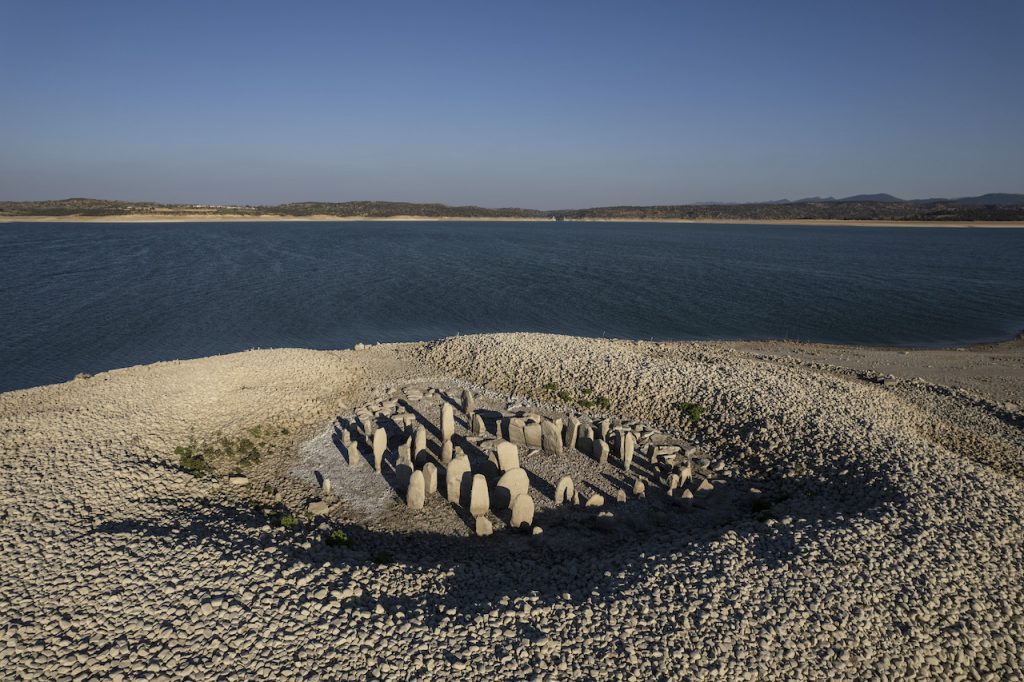
Officially known as the Guadalperal Dolmen, this could be the largest Neolithic site ever found on the Iberian Peninsula. Archaeologists refer to it as the 'Spanish Stonehenge', due to its size and estimated age. The lowering of the water level in the reservoir completely exposed it, allowing researchers to take a closer look.
For the first time in history, climatologists and meteorologists named an extreme heat wave. Officially recognized in Spain as 'Zoe', she was named in an "effort to facilitate the spread of awareness of dangerous events", according to The Weather Channel. Due to its severity and extension, they have described the phenomenon as "cooking the planet over a slow fire".
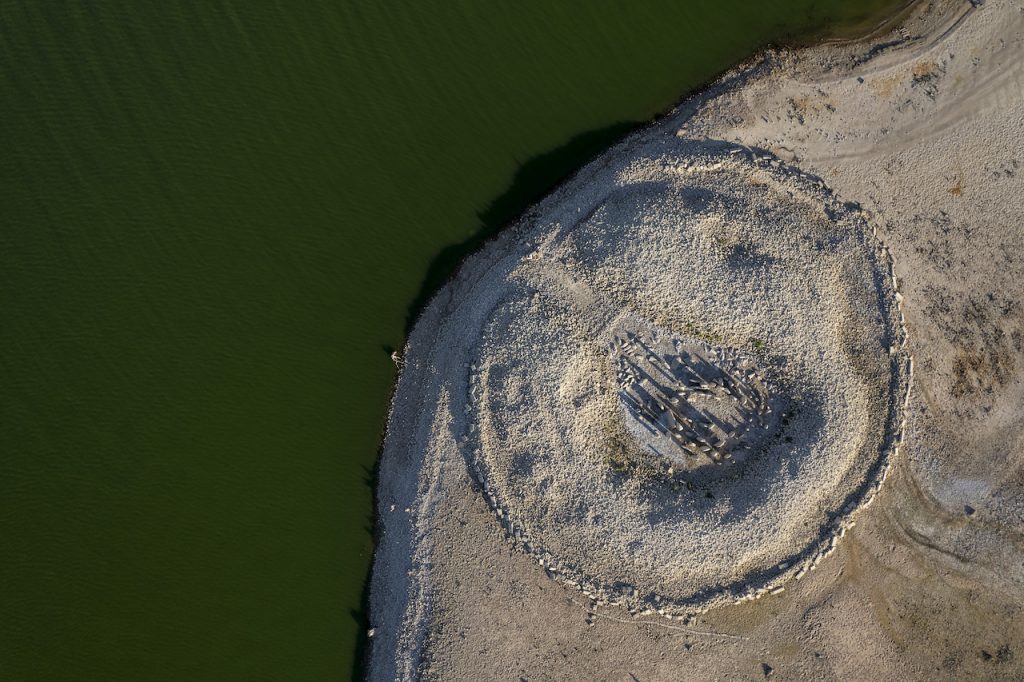
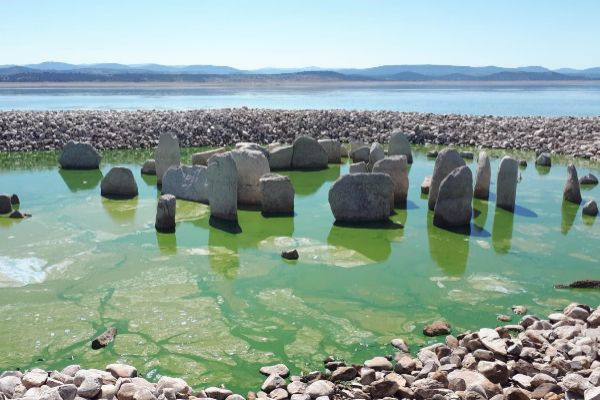
Even the United Nations agency, the World Meteorological Organization (WMO), warned that June and July will be the hottest months in the Western Hemisphere, causing raging forest fires, extreme droughts and deaths from heat stroke. At the same time, one of the largest reservoirs in the country reached historic lows, with 28% of its total capacity.
With the advance of the drought, a Neolithic site was revealed. As seen in Stonehenge, it is a circle of concentric stones. It is estimated that the megalithic pieces are at least 4 thousand years old.
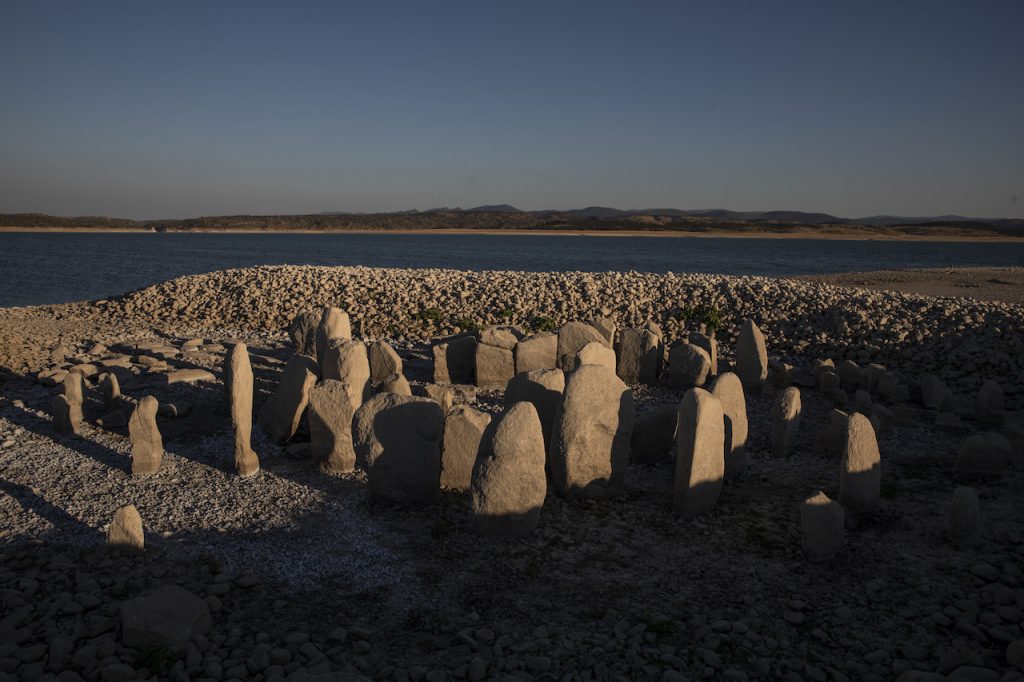
Clothes and belongings that the prehistoric inhabitants of the region used remained in the Guadalperal Dolmen. For this reason, researchers have described it as "an archaeological treasure" unique in Europe. In May 2022, according to the Official State Gazette (BOE), it was declared a Site of Cultural Interest, with the category of Archaeological Zone.
Until now, however, it had been little studied, because the water level prevented archaeologists from properly entering the site. Since the 1960s, this space has only been fully revealed 4 times.
 0
Like
Published at 6:00 PM Comments (2)
0
Like
Published at 6:00 PM Comments (2)
Europe's Best Preserved City Wall
Tuesday, August 16, 2022

In Spain, there is a city with a wall that is perfectly preserved and that can take us to a medieval world just by walking through its old town. This is Ávila, considered the Spanish city with the best-preserved wall in Europe, a place to spend a weekend enjoying highly valuable historical heritage, as well as the best gastronomy.
Ávila reached its maximum splendour in the 16th century as a town of mysticism and spirituality, epitomised by Teresa de Cepeda y Ahumada, or more commonly known as St Teresa of Ávila. If one follows the Route of Teresa, one will travel from the Gothic style through to the Renaissance, as Ávila’s most universal saint lived halfway between both periods. Saint Teresa and also San Juan de la Cruz brought the Spanish language to one of its highest levels through their poetry and writings on mysticism.
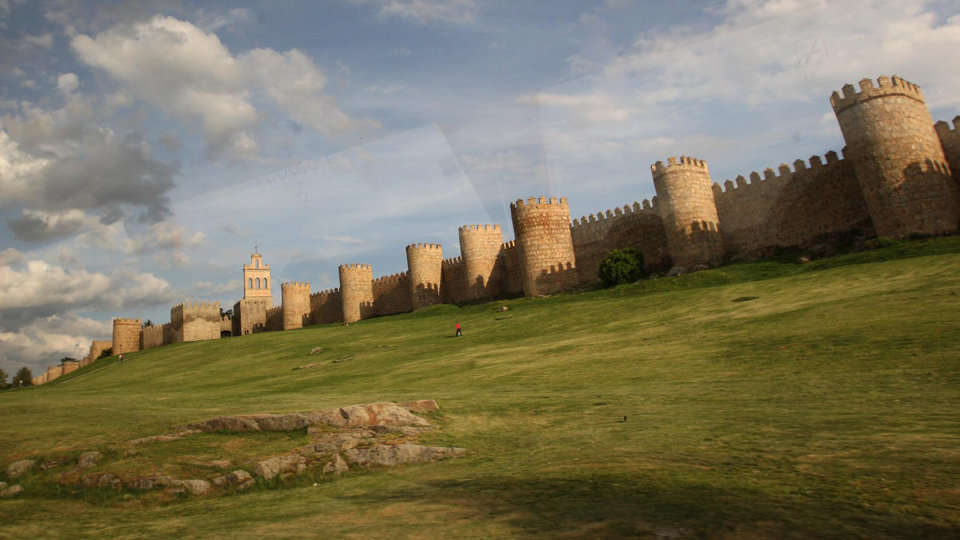
Most of Ávila’s festivities and traditions are religious, but they also have a pagan side. Religion is joined by other leisure activities that are based on the town's multi-racial customs and traditions. Each quarter of the town has its own festival in remembrance of the divisions that existed in the past when each of the groups who went to repopulate the town settled around a parish church.
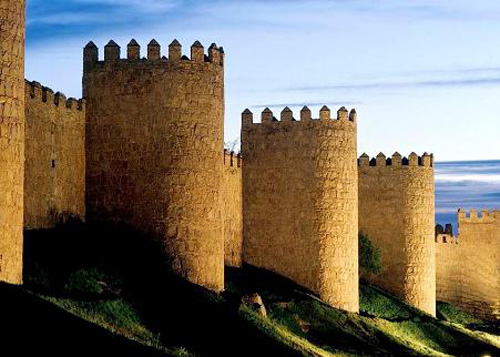
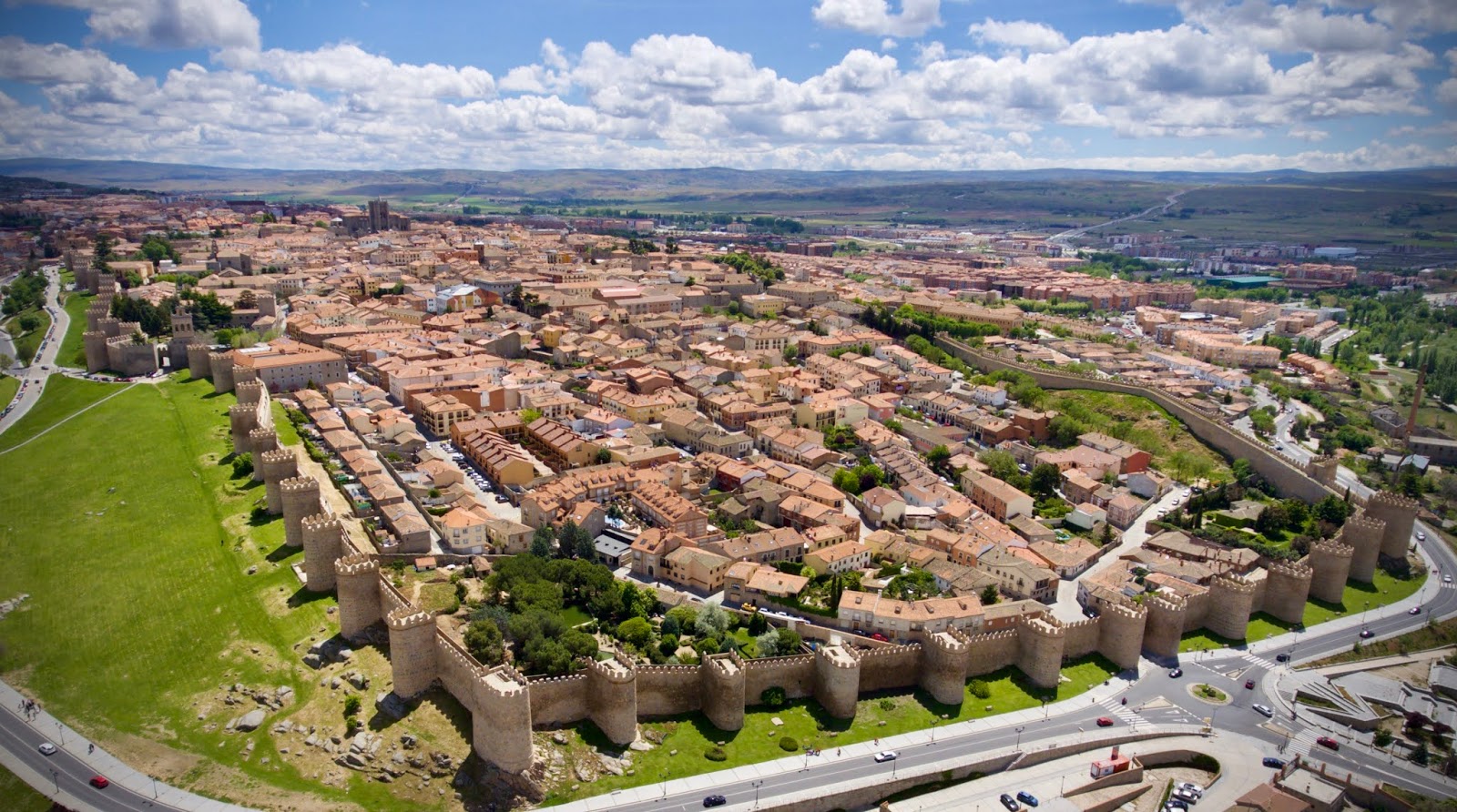
Ávila is situated in an area of rolling hills northwest of Madrid. As a city it holds the titles of "Ávila del Rey" (granted by Alfonso VII), "Ávila de los Leales" (granted by Alfonso VIII) and "Ávila de los Caballeros" (granted by Alfonso X), all of them present in the flag of the city.
Ávila's hallmark is its wall. In fact, it is considered the best preserved walled city in Europe. It is a Romanesque military fence that surrounds the old town. Both the wall and the old town, as well as several churches (San Pedro, San Vicente, San Andrés and San Segundo) located outside the walls, were declared a World Heritage Site by UNESCO in 1985.
According to historical data, construction of the Ávila wall began on May 3, 1090, by order of Raymond of Burgundy and was completed in 1099. It would have taken 9 years to build it. However, in the 3rd century BC. C. the Romans built the first wall.
The characteristics of the walls are as follows: It has a perimeter of 2,515 meters, 2,500 battlements, 87 cubes or towers and 9 gates. It occupies an area of 33 hectares and forms a rectangle oriented from east to west. Its walls are 3 meters thick and 12 meters high. For its layout, the unevenness of the land was used and neither slopes nor buttresses were built. In addition, the wall has nine gates, colloquially called arches:
1. The Puerta del Alcázar or the Mercado Grande, where the figurative dethronement of King Enrique IV of Castile took place, an episode known as the Farsa de Ávila.
2. The Door of the Cathedral, of the Leales or of the Peso de la Harina, opened in the 16th century.
3. The Gate of San Vicente.
4. The Arco del Mariscal, receives that name in memory of Álvaro Dávila, Marshal of King Juan II of Castile, who subsidized its construction.
5. The Arch of Carmen or the prison, opens between two towers with a square section. It was restored in the fourteenth and sixteenth centuries.
6. La Puerta de la Mala Dicha, of Mala Ventura or popularly known as the Gypsy Arch, through which the Jewish quarter was accessed.
7. The Puerta de la Santa or de Montenegro, through which you access the house of Santa Teresa.
8. The Puerta del Rastro, de Grajal or de la Estrella, which has a 16th-century arch.
9. The Puerta del Puente, was restored in the 15th and 17th centuries.
In addition to the wall, there are many other things to visit in Ávila. Some examples are the Plaza del Mercado Chico, the main square of the historic centre; the Mirador de Los Cuatro Postes, the best place to admire and take pictures of the walls of Ávila; the Cathedral of Ávila, the first Gothic cathedral in Spain and it seems that its construction dates back to the end of the XI or beginning of the XII or the Puerta del Alcázar, the most important gate of the wall and also the most robust.
The Church of San Pedro Apóstol, a Romanesque church from the 13th century, is also considered a Site of Cultural Interest and well worth visiting as is the Royal Monastery of Santo Tomás, a Gothic jewel that was built between 1482 and 1493.
The 'Gastronomical Triad' of the town is made up of Judías del Barco (large haricot beans from the village of El Barco de Ávila, also known locally as 'pipos'), Chuletón de Ávila (veal chop from 500 g to 1 kg in weight, depending on your appetite!) and Yemas de Santa Teresa (sweet cakes made from egg yolks and sugar). A delight for any palate especially the Chuletón if you are a meat lover!
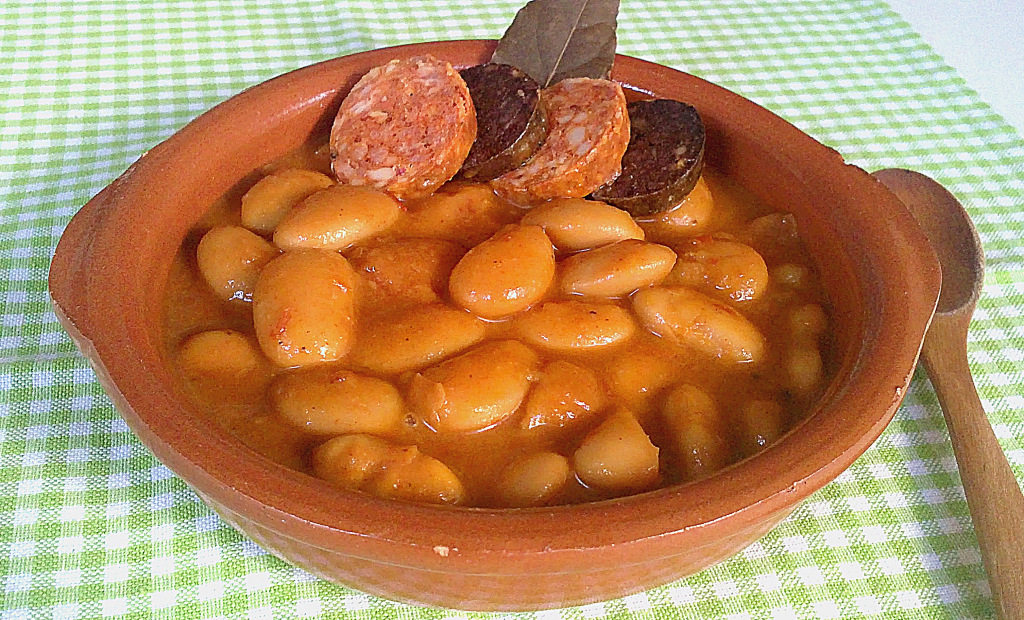 
This type of menu is a true example of Ávila gastronomy, based on agricultural and cattle-farming products from a province that varies greatly in both geography and climate. Pulses and legumes have earned their fame thanks to the haricot bean from El Barco and the Carilla (a small haricot bean with a black dot) from the banks of the River Tormes and the chickpea from La Moraña in the north of the province. Meat is also popular: kid from Candeleda, lamb from the Amblés Valley and roast suckling pig from the north of the province.
The way the food is cooked is very simple and rustic with no sauces or extravagance; the importance is given to the quality of the product itself to ensure that it provides original flavours without the need for enhancements.
Avila is well worth a visit, you won't be disappointed.
 1
Like
Published at 10:33 PM Comments (1)
1
Like
Published at 10:33 PM Comments (1)
Some of Spain's most curious beaches
Wednesday, August 10, 2022
Beaches with freshwater waterfalls, historic buildings or islets where you can go when the tide goes out. Located between cliffs, on islands or even inside a cave. If we want to escape from the most typical places, the Spanish territory is full of curious sandbanks that will leave you speechless. Here is just a handful:
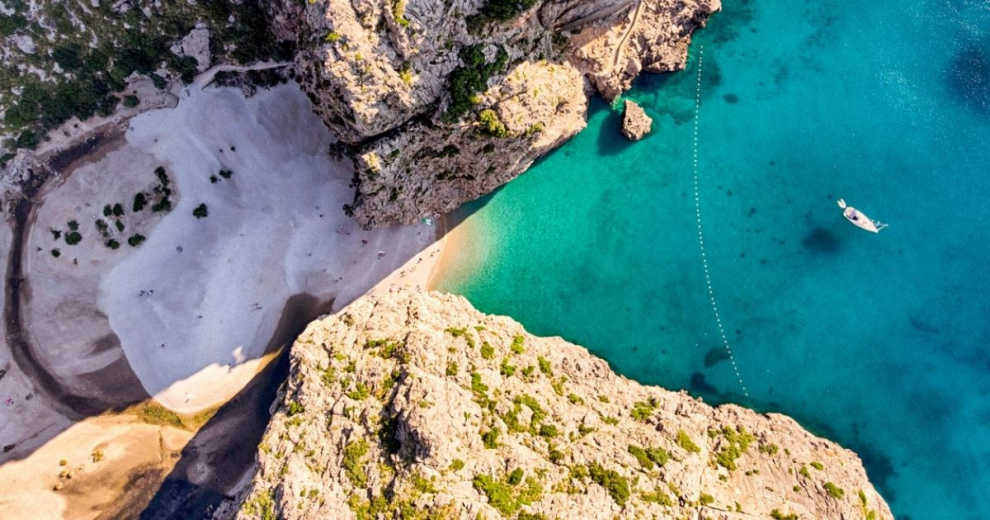
Cala Torrent de Pareis (Majorca)
Torrent de Pareis beach is located in the north of Mallorca, on the coast of the Sierra de Tramuntana. Its turquoise waters are guarded by gigantic cliffs that reach 200 meters in height and that give the place special acoustics. That is why, in the cove itself, choral concerts are often organised.
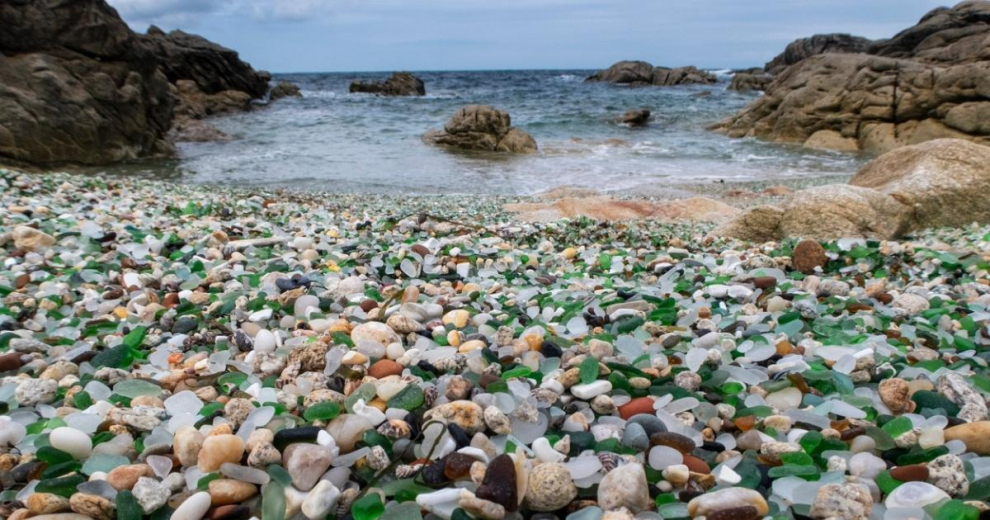
Glass Beach - Playa de los Cristales (A Coruña)
Within the Baleeira cove, in the municipality of Laxe, we find the striking "Crystals" beach. Years ago it was used as a garbage dump and all kinds of glass waste were thrown into its waters, which with the erosion of the sea and the wind turned into polished crystals that now cover its entire surface.
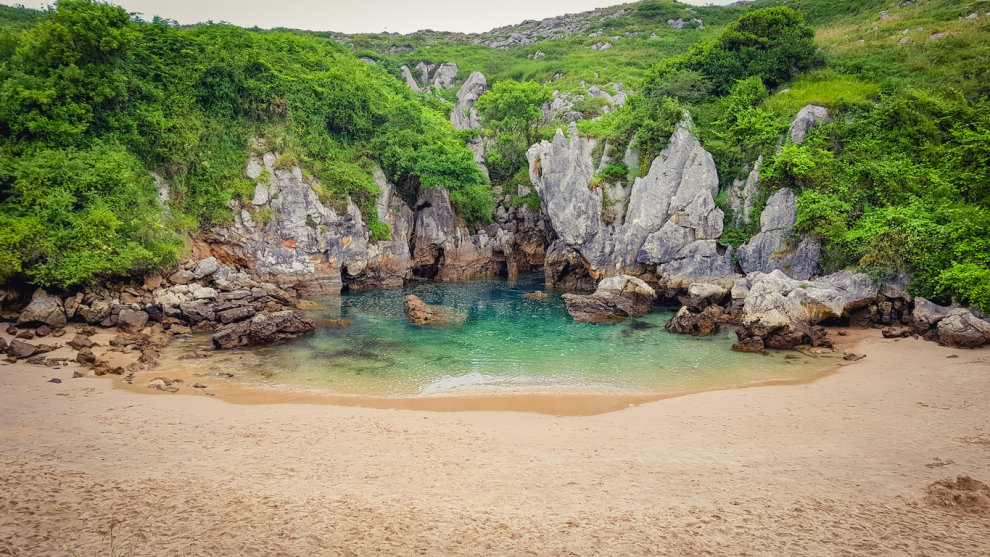
Gulpiyuri Beach (Asturias)
Oddly enough, the smallest beach in the world is not only found in Asturias but also inland. It is Gulpiyuri, a small sandy area connected by the sea through a small hole in the rocky wall, which is where the water enters.
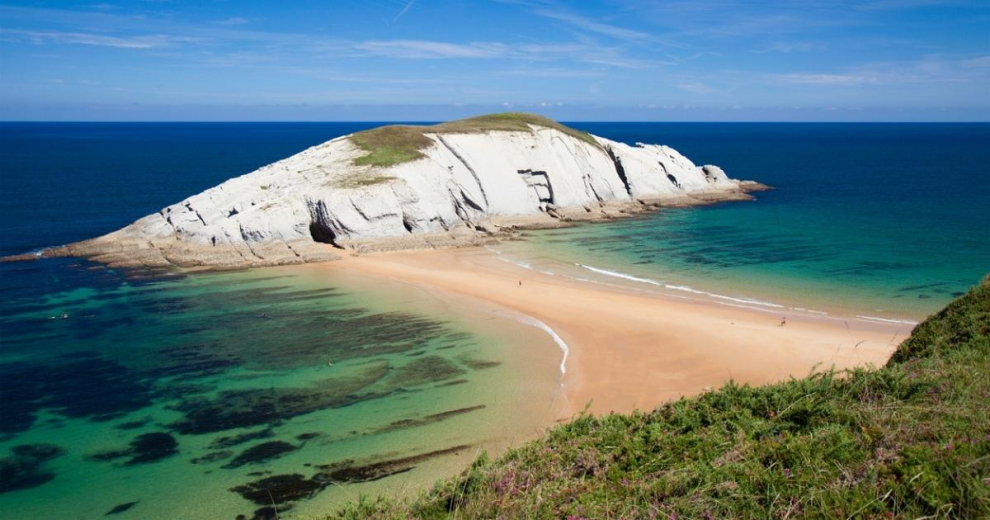
Covachos Beach (Cantabria)
Covachos beach is located in the municipality of Santa Cruz de Benaza, very close to Santander. In its 50 meters of length, fine golden sand awaits us, clean and refreshing waters, a waterfall that flows into the beach itself and an islet to which we can only go when the tide is low.
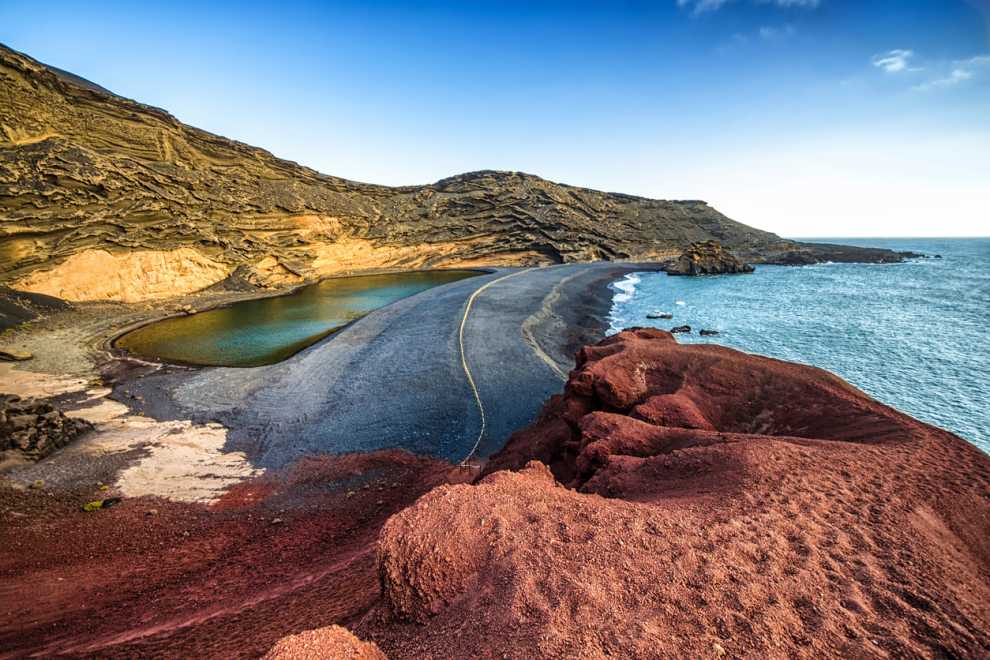
El Golfo Beach (Lanzarote)
On the west coast of Lanzarote, the crater of an ancient volcano plunges into the Atlantic Ocean creating the Charco de los Clicos, which with its bright green waters contrasts with the black sand of El Golfo beach.
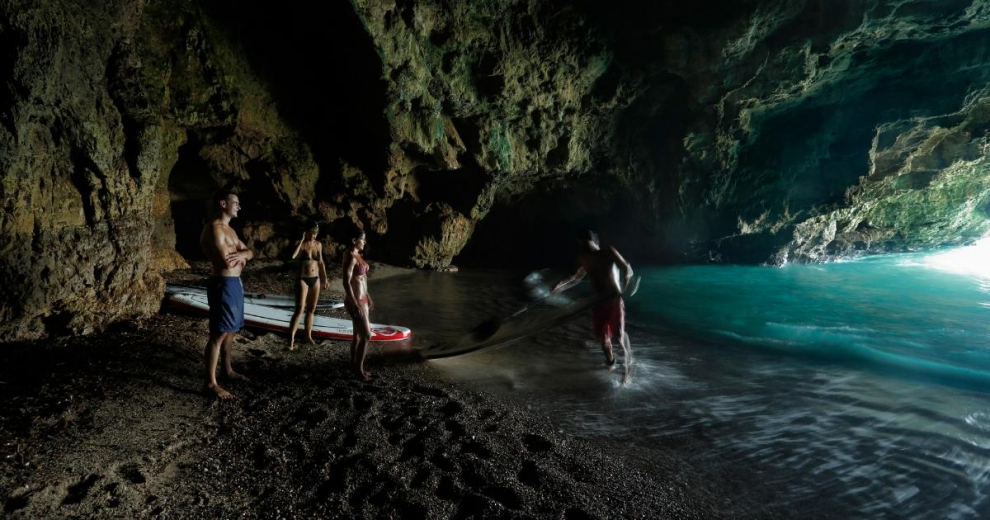
Cova del Llop Marí beach (Tarragona)
In the town of L'Hospitalet de l'Infant, we come across the Cova del Llop Marí, a cavity that goes into a cliff and surprises us with a beach inside. The value of this protected natural space is such that to access it you must make a prior reservation.
 1
Like
Published at 11:21 PM Comments (1)
1
Like
Published at 11:21 PM Comments (1)
A handful of random villages really worth visiting!
Friday, August 5, 2022
Spain is full of stunning villages but here I have selected just a handful. Some may be well known, and others may be less well known, but all are breath-taking and well worth a visit.
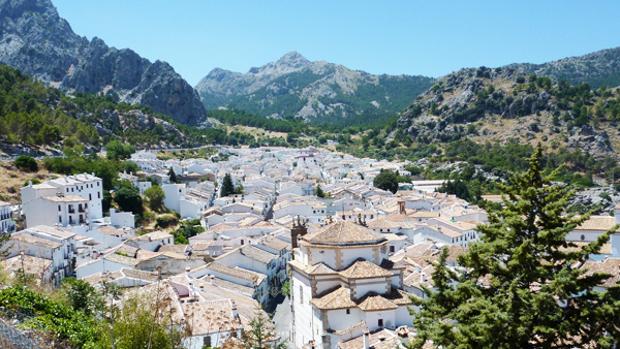
Grazalema (Cádiz)
On the Grazalema mountain range’s white village route, this charming enclave dazzles in the glare of the southern sun, its white façades contrasting with the natural green landscape around it. Curiously, this is the wettest area of Spain, which would explain why it boasts one of the country’s biggest forests of ‘pinsapo’ (fir), which has all but disappeared in the rest of Western Europe. A town of 2,165 inhabitants, Grazalema has been part of a Biosphere Reserve since 1977, making it a hiker’s paradise.
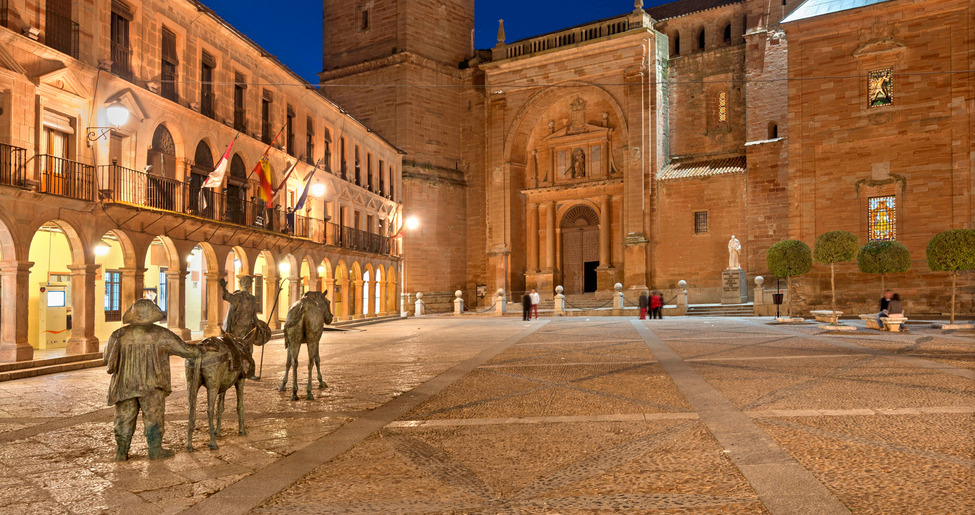
Villanueva de los Infantes (Ciudad Real)
This town of 5,500 residents in Campo de Montiel, in the region of Castilla–La Mancha, was declared a site of artistic and historical significance in 2004 thanks, among other things, to its 17th-century Plaza Mayor – the main square – and Santiago Hospital. But apart from the architecture, it’s fun just to wander along the medieval street of General Pérez Ballesteros or the upbeat Calle Cervantes. Villanueva de Los Infantes is one of the corners of La Mancha that may have been the subject of Cervantes’ famous opening line in ‘Don Quixote’: “A village in La Mancha whose name I do not wish to recall...”
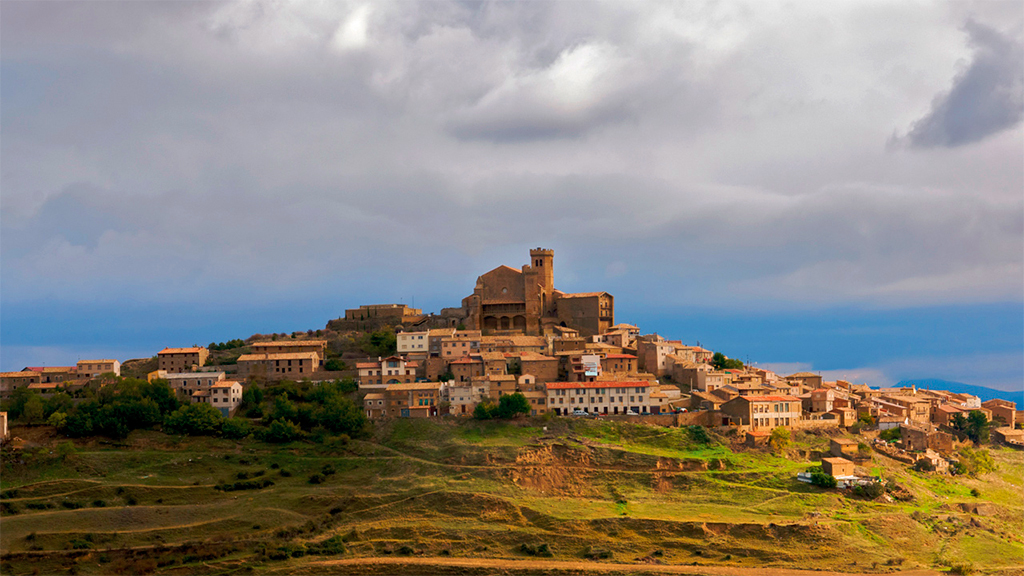
Ujué (Navarre)
The cobbled streets of this rugged medieval hamlet, 50 kilometres from Pamplona in the Olite district, lead up to the Santa Maria church–fortress that was built between the 12th and 14th centuries. Once you have made it up, you can enjoy panoramic views that stretch from the foothills of the Pyrenees and the plains of Ribera del Ebro to the mountain of Moncayo to the south. It is also worth just strolling through its labyrinthine streets, which are home to 200 people, as well as sampling the local delicacy, ‘migas de pastor’ (or shepherd’s breadcrumbs).
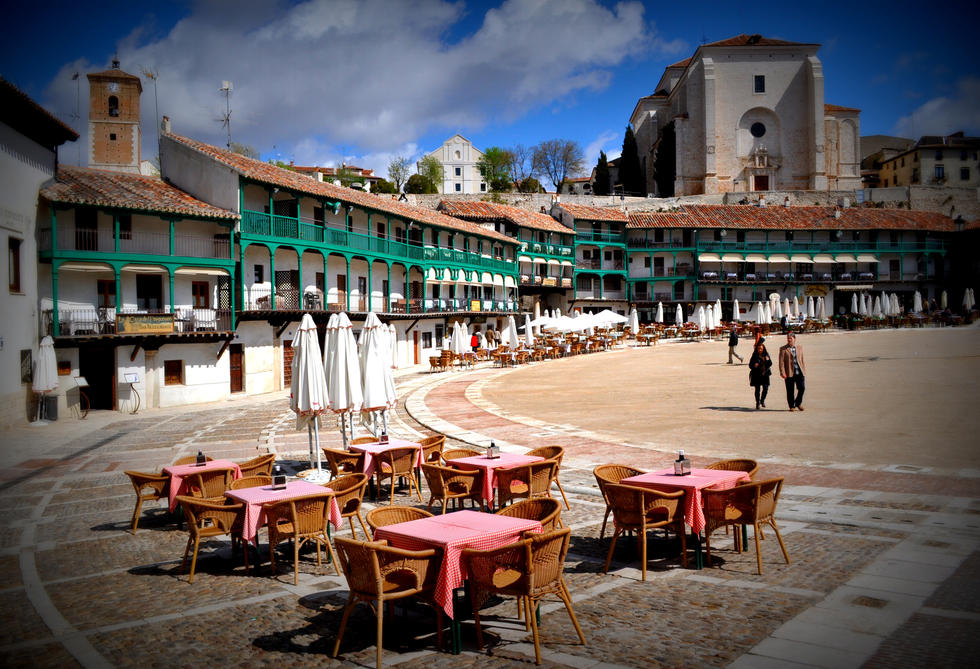
Chinchón (Madrid)
The main square is the best place to start a sightseeing tour of this charming town of 5,447 inhabitants, some 44 kilometres southeast of Madrid. Recognized as one of the most beautiful squares in Spain, it is by no means all the town has to offer. There is also the 14th-century Torre del Reloj – or clock tower – which is the only vestige of the Nuestra Señora de Gracia Church, the 15th-century Castillo de Los Condes – Castle of the Counts – which is fairly well preserved despite being ravaged by fires and wars, and the San Agustín Monastery, whose living quarters have been converted into an impressive Parador, or state-run luxury hotel.
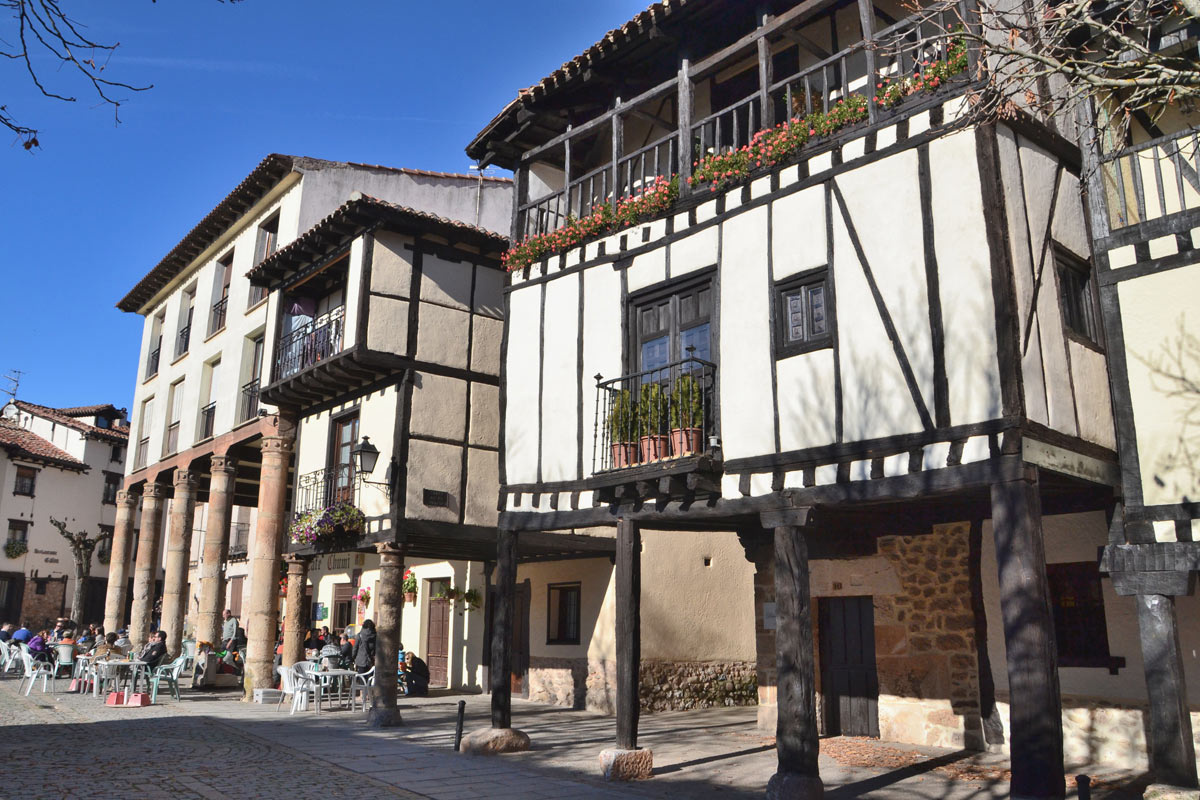
Covarrubias (Burgos)
Lying on the banks of the Arlanza River, Covarrubias has the only pre-11th century Castilian fortress in Spain – the Torreón de Fernán González, which was built in the Mozarabic style in the 10th century. Lately, there has been a surge of tourism to this community of 600 inhabitants, with visitors drawn by the tomb of Princess Christina of Norway in the cloister of the Church of San Cosme and San Damián. The daughter of King Haakon IV, Christina married Prince Felipe, the brother of Alfonso X the Wise in 1258 in Valladolid and was buried in Covarrubias following her death four years later. Legend has it that whoever touches the bell next to the tomb will find love. The Archivo del Adelantado de Castilla is also worth a look as are the numerous medieval-style dwellings that line the streets.
 2
Like
Published at 8:22 PM Comments (1)
2
Like
Published at 8:22 PM Comments (1)
Spam post or Abuse? Please let us know
|
|